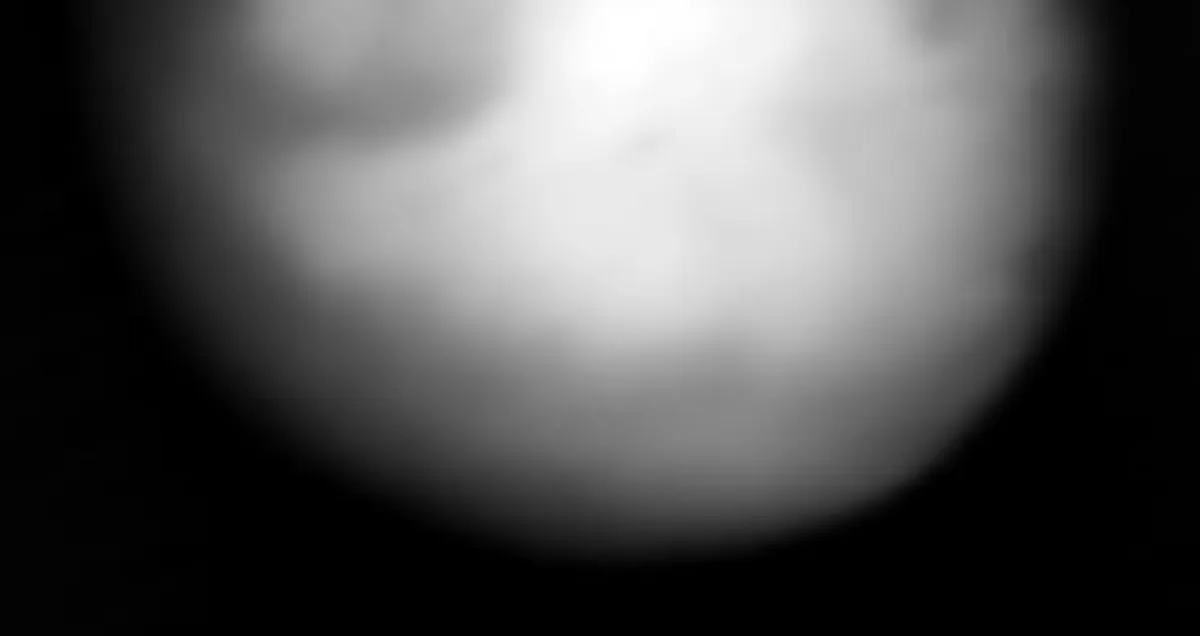
NASA's Europa Clipper spacecraft is on an ambitious mission to explore Jupiter's moon, Europa, which is believed to harbor a vast ocean beneath its icy crust. Recently, the spacecraft utilized a flyby of Mars to calibrate its advanced infrared imaging instrument, a crucial step before its arrival at the Jupiter system in 2030. This flyby not only served as a trajectory adjustment but also provided an invaluable opportunity for the Europa Clipper to capture infrared images of the Red Planet.
During its close encounter with Mars, the Europa Clipper's infrared imaging system collected data that will assist scientists in ensuring the thermal imaging instrument operates correctly. The mission intends to conduct 49 close flybys of Europa after entering orbit around Jupiter, aiming to uncover whether this intriguing moon possesses the necessary conditions for life. A vital aspect of this investigation involves thermal imaging, which will map the moon's temperatures and reveal surface activity levels.
As the Europa Clipper scans Europa, it will analyze heat emissions from the moon's surface. Warmer regions of ice will emit more energy, potentially indicating recent geological activity. This thermal imaging will also assist scientists in locating areas where the ocean is closest to the surface. The surface of Europa is marked by dramatic ridges and fractures, thought to be formed by ocean convection processes that pull apart the icy crust, allowing water to rise and fill the gaps.
On March 1, Europa Clipper flew just 550 miles (884 kilometers) above the Martian surface, leveraging the planet's gravitational pull to adjust its path toward Jupiter. This gravity assist will expedite the spacecraft's journey, but it also offered a critical chance to test the Europa Thermal Imaging System (E-THEMIS). Over an 18-minute period, the instrument captured one image per second, resulting in over a thousand grayscale images sent back to Earth starting on May 5.
Scientists compiled these images into a comprehensive global snapshot of Mars, applying color coding for clarity: warmer regions are represented in red, while cooler areas are shown in blue. By comparing the E-THEMIS images with existing data from Mars, scientists can assess the instrument's performance. Phil Christensen, principal investigator for E-THEMIS at Arizona State University, emphasized the importance of ensuring the new images align with previous data, stating, “We wanted no surprises in these new images.”
Nasa’s Mars Odyssey orbiter, which has been capturing thermal images of Mars since its launch in 2001, played a crucial role in this process. The Odyssey team collected thermal imagery of Mars before, during, and after the Europa Clipper's flyby, providing additional data for comparison and calibration of E-THEMIS. Moreover, the Europa Clipper team used this flyby to test all components of its radar instrument in unison for the first time, an essential step given the challenges of pre-launch testing in a clean room environment.
Preliminary assessments indicate that the radar tests were successful, and the data collected will be analyzed in the upcoming weeks. The science team also used the opportunity to confirm that the spacecraft's telecommunication equipment can conduct gravity experiments at Europa by transmitting signals while passing through Mars' gravity field.
Launched from NASA’s Kennedy Space Center in Florida on October 14, 2024, aboard a SpaceX Falcon Heavy rocket, the Europa Clipper is on a remarkable 1.8 billion-mile (2.9 billion-kilometer) journey to Jupiter, which is located five times farther from the Sun than Earth. After utilizing Mars' gravity, the spacecraft's next assist will come from Earth in 2026.
The Europa Clipper mission has three primary science objectives: to determine the thickness of Europa's icy shell and its interactions with the underlying ocean, to investigate the moon's composition, and to characterize its geological features. This detailed exploration will significantly enhance our understanding of the astrobiological potential of celestial bodies beyond Earth.
Managed by Caltech in Pasadena, California, and led by NASA’s Jet Propulsion Laboratory, the Europa Clipper mission is a collaborative effort involving various NASA centers, including the Johns Hopkins Applied Physics Laboratory, Goddard Space Flight Center, Marshall Space Flight Center, and Langley Research Center. The Planetary Missions Program Office at NASA Marshall oversees the mission's program management, while NASA’s Launch Services Program managed the launch service for the spacecraft.
For more information about the Europa Clipper mission, visit NASA's official page.
For further inquiries, please contact:
Gretchen McCartney
Jet Propulsion Laboratory, Pasadena, Calif.
Phone: 818-287-4115
Email: gretchen.p.mccartney@jpl.nasa.gov
Karen Fox / Molly Wasser
NASA Headquarters, Washington
Phone: 202-358-1600
Email: karen.c.fox@nasa.gov / molly.l.wasser@nasa.gov